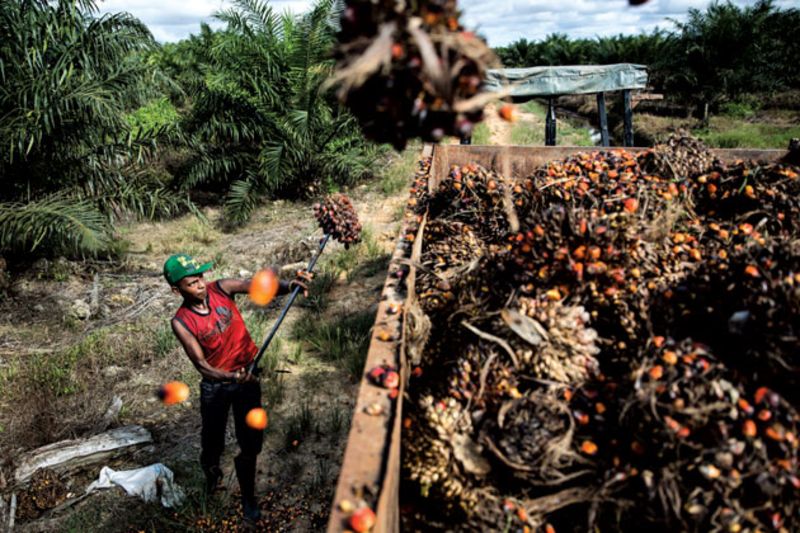December 10, 2018, will mark the 70th anniversary of the U.N. General Assembly’s adoption of the Universal Declaration of Human Rights in 1948. The Declaration outlines inalienable rights entitled to every human being, regardless of race, ethnicity, religion, sex, language, political or other affiliation, social or national origin, birth, or other status.
 Today, and for many years, environmental and social justice movements have recognized the fundamental role of a healthy and safe environment in attaining and securing a universal application of many rights set forth in the Declaration. After all, a right to life (Article 3) necessitates food, water, and air. These are all natural resources that we work to protect and distribute fairly. It is important to recognize freedom from discrimination (Article 2), which calls for the applicability of rights to all persons; today, various specific demographics are still more likely to suffer from poor air quality, contaminated water, or food insecurity.
Today, and for many years, environmental and social justice movements have recognized the fundamental role of a healthy and safe environment in attaining and securing a universal application of many rights set forth in the Declaration. After all, a right to life (Article 3) necessitates food, water, and air. These are all natural resources that we work to protect and distribute fairly. It is important to recognize freedom from discrimination (Article 2), which calls for the applicability of rights to all persons; today, various specific demographics are still more likely to suffer from poor air quality, contaminated water, or food insecurity.
Further, with climate change increasingly at the forefront of global discussions, the U.N. Human Rights Council adopted Resolution 7/23 on human rights and climate change in 2008. The Resolution recognizes the implications of climate change specifically on the enjoyment of human rights. Sea-level rise is a particularly tangible consequence of climate change, threatening to displace 2 billion people and undermine, or at least complicate, the rights to self-determination, property, culture, and an adequate standard of living (among others). Rising seas and the other effects of climate change impact already-vulnerable populations more drastically, further threatening their freedom from discrimination.
Evidently, working to improve environmental outcomes and protecting our natural resources is critical to upholding internationally recognized human rights. It should also be appreciated that efforts to strengthen human rights can promote environmental goals by strengthening various aspects of environmental rule of law. Environmental rule of law is closely tied to rule of law, but can be distinguished by its deliberate consideration of the environment as a foundation for human life, various complex dynamics surrounding natural resource governance, carrying capacities and planetary tipping points, and the challenge of relative scientific uncertainty.
Many of the rights set forth in the Declaration relevant to environmental rule of law are substantive--fundamental to being a human--and exist independently of man-made laws. For example, Article 3 states that “everyone has the right to life, liberty, and security of person.” Meanwhile, indigenous and other defenders of land and the environment are being murdered in near-record numbers around the world (twice the number of journalists killed in 2016) for their affiliation with groups protesting certain development projects, or their opinions on the legality of related activities.
Another example from the 1948 U.N. Declaration—the right to own property and not be arbitrarily deprived of it (Article 17)—supports efforts to secure land tenure. Numerous studies show that securing land tenure (including for indigenous people and women, see Article 2) improves environmental outcomes because it increases the likelihood that investment in sustainable practices will pay off and diminishes the incentive for intensive, short-term exploitation or uses. Similarly, secure land tenure can prevent conversion to unsustainable uses.
 Additionally, the right to work in just and favorable conditions with salary (Article 23) might require careful consideration of standards for environmental factors such as safe air and water or the use of forced labor for activities damaging to the environment.
Additionally, the right to work in just and favorable conditions with salary (Article 23) might require careful consideration of standards for environmental factors such as safe air and water or the use of forced labor for activities damaging to the environment.
Procedural rights, necessary for the enforcement and realization of substantive rights, are also fundamental components of strong environmental rule of law. The nature of the environment as fundamental to sustaining life makes it the interest of all persons to engage in related governance processes. Robust public participation mechanisms facilitate sound environmental decisionmaking. Further, the rights to recognition and equality before the law (Articles 6 and 7) and access to justice (Article 8) ensure all entities act in accordance with and benefit equally from the laws developed to protect the environment and sustain life. Given these strong links between rights and environmental rule of law, the last four decades have seen a proliferation of rights-based approaches to protecting our planet.
Nonetheless, the past two years have been some of the deadliest in recent history for defenders of the environment, and have seen record temperatures prompting health warnings and populations displaced by natural resource-affected or climate change-amplified conflicts. These patterns reflect how international laws and universally supported norms are, by definition, not automatically operationalized or sufficient, and that gaps in national and sub-national legislation—notably in implementation and enforcement—allow threats to human and environmental rights to persist.
It is more urgent than ever that we recognize the interdependence between environmental and human rights goals, and that advocates of these rights work together to protect future generations. The spread of provisions or rights to a healthy environment over the past 40 years indicates increasing political interest in these issues; but now, we must implement and enforce the comprehensive suite of rights that are crucial to sustaining a healthy planet for healthy humans.
For a detailed discussion on rights and environmental rule of law, stay tuned for ELI and U.N. Environment’s forthcoming Flagship Report on Environmental Rule of Law (2018).
